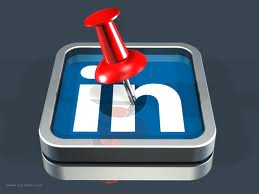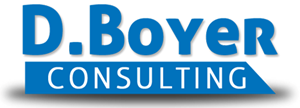Business is mostly conducted via email or phone communications.
Office hours 10:00 a.m. to 6:00 p.m, Mon. - Thurs., and 10:00 a.m. to 2:00 p.m. on Fridays.
SEND EMAIL INQUIRIES DIRECTLY TO:
Dawn.Boyer@me.com
Business is mostly conducted via email or phone communications.
Office hours 10:00 a.m. to 6:00 p.m, Mon. - Thurs., and 10:00 a.m. to 2:00 p.m. on Fridays.
SEND EMAIL INQUIRIES DIRECTLY TO:
Dawn.Boyer@me.com
Business is mostly conducted via email or phone communications.
Office hours 10:00 a.m. to 6:00 p.m, Mon. - Thurs., and 10:00 a.m. to 2:00 p.m. on Fridays.
SEND EMAIL INQUIRIES DIRECTLY TO:
Dawn.Boyer@me.com
Don’t Stop at the LinkedIn Personal Profile!
August 4th, 2014 by Dawn Boyer
Don’t stop at the LinkedIn personal profile!
You probably have seen the posts, the emails, and the training announcements where ‘specialists’ are horn blowing about building up your LinkedIn profile. They are directing you to get it filled out completely, get certain sections added, and the final promise is that recruiters or desperate clients will find you there. And they want to train you to do it, and promising you can make more money with a rich LinkedIn profile.
These experts promise all you have to do is create your profile and everyone will come to you, right? If you have a profile on LinkedIn – recruiters and headhunters will be banging on your door, begging for an interview, right? Folks will automatically follow you if they see you are working for an employer of choice, right?

LinkedIn is a powerful professional business social media platform, as well as job search tool. Ensure that you do NOT stop with simply completing your profile – keep the momentum going!
Wrong. Creating a profile and walking away, then expecting results, will end in disappointment. Like any good marketing tool, you must ‘work it’ for productivity. You must use it often and interact with others within the social media platform.
Having a completed LinkedIn profile is just the start of the process. LinkedIn is a ‘social’ media site, so you must interact on LinkedIn with others to get notice, create and sustain dialogue with others, and to share your own expertise with others seeking your wisdom. When one signs up for a LinkedIn profile, the goal is to connect with as many of your business and professional social circles as possible. This enables those who want to contact you directly the opportunity to contact you directly or via an introduction.
The secondary goal as a member is to start working the circuit. Join groups of interest to you – either within your industry or your target markets for jobs or for your customers. You are joining the groups – not to bang the drum about your expertise, product, or service – but to entice folks to seek out more about you because they are curious about who you are and what you can do for them.
When you join a group, and before you inundate members with sales spiels, job requests, or resume summaries, lurk on the group page and get the focus for on-going conversations. Learn the ‘rules’ (what is not allowed; what is allowed) posted by the organizer. Familiarize yourself with the tabs in the group page – discussions, promotions, and job postings for example. If someone posts an interesting topic, then comment on their post – like it, provide some feedback or commentary, and be sure to type in the writer’s name so they will get notice they have been ‘tagged’ in the conversation. Keep an eye on the jobs tab – you never know when your perfect job will be posted. Ensure you get daily or weekly notices from the groups what regularly post job openings.
How do you find out if someone you want to reach is a member of group? Look at the bottom of their profile. Observe what groups they have joined, then visit the group to get a ‘snapshot’ of what the group is about, then join yourself. If a Managed group, you may get approved quickly by the organizer. If an Open group, you will get instant access to all the members and the page.
What is the positive aspect of being a member of group in which a target customer is a member? You can ‘in-mail’ (private email within LinkedIn) that person directly within the group without having to pay for the privilege (LinkedIn charges for each in-mail for non-paying levels of membership). You can send inquiries about jobs or ask the person to contact you for further interest you have in their services or products. You can post links to educational or interesting websites in the discussion tab. If you post regularly, the members of the group will take notice of your interesting content, and likely grow to trust your content.
Providing a ‘backlink’ to your business website or your online resume may entice others to ‘click’ to find out more. How do you ensure that happens? With every post on LinkedIn, remember to embed the website URL at the end of each post with a business link and/or point of contact information. In other words, leave a digital footprint or business card with every post you write.
Another new feature for LinkedIn is the publishing platform. This feature was added to the ‘share an update’ box on the home page several months ago and rolled out to intensive users first, then filtered down to those who use LinkedIn less regularly. This ‘blog’ capability has enabled LinkedIn members to post short articles and become their own news columnists per se. Many authors are not taking advantage of this as a marketing platform to push readers to their own website.
Create a business article blog on your business website (or post a white paper on your resume website). Copy and paste the first few paragraphs as a teaser, with the words ‘…read the rest of this article on …’ after the last paragraph, and then provide a hot-link to the full article on your resume or business website. This will drive inbound traffic to the website for higher analytics and exposure to your services or your capabilities as a job seeker. The biggest bonus about the publishing platform is you can ‘socially share’ your blog post from LinkedIn to external social media platforms such as Google+, Twitter, and Facebook, as well as internally to all your connections via LinkedIn as a notification to followers.
If you own a business, ensure you have created a business page (you need a valid company email address, e.g., YourName@MyBusinessName.com). There you can post links back to your business website, post exciting news about the company (similar to press releases), and create ‘showcase’ pages for each service or product you offer. While it’s harder to get LinkedIn members to ‘follow’ business pages, don’t ignore it as part of the weekly social media process to increase awareness and branding.
LinkedIn has some amazing, engaging, and productive tools for business developers and entrepreneurs, as well as job seekers. Use the capability of this social media to really build interest in you and your business, or as a job seeker, subject matter expert by expanding the LinkedIn Personal Profile. Ensure your expertise is exposed to those seeking your knowledge for job placement or as a potential new client. Don’t stop at your profile! Keep going to build a robust presence on this professional social media platform.
Dawn Boyer, Ph.D., owner of D. Boyer Consulting – provides resume writing, social media management and training, business development, human resources consulting, and print-on-demand author coaching and consulting. Reach her at: Dawn.Boyer@DBoyerConsulting.com or https://dboyerconsulting.com.
Readers Comments
Don’t Stop at the LinkedIn Personal Profile!
August 4th, 2014 by Dawn Boyer
Don’t stop at the LinkedIn personal profile!
You probably have seen the posts, the emails, and the training announcements where ‘specialists’ are horn blowing about building up your LinkedIn profile. They are directing you to get it filled out completely, get certain sections added, and the final promise is that recruiters or desperate clients will find you there. And they want to train you to do it, and promising you can make more money with a rich LinkedIn profile.
These experts promise all you have to do is create your profile and everyone will come to you, right? If you have a profile on LinkedIn – recruiters and headhunters will be banging on your door, begging for an interview, right? Folks will automatically follow you if they see you are working for an employer of choice, right?

LinkedIn is a powerful professional business social media platform, as well as job search tool. Ensure that you do NOT stop with simply completing your profile – keep the momentum going!
Wrong. Creating a profile and walking away, then expecting results, will end in disappointment. Like any good marketing tool, you must ‘work it’ for productivity. You must use it often and interact with others within the social media platform.
Having a completed LinkedIn profile is just the start of the process. LinkedIn is a ‘social’ media site, so you must interact on LinkedIn with others to get notice, create and sustain dialogue with others, and to share your own expertise with others seeking your wisdom. When one signs up for a LinkedIn profile, the goal is to connect with as many of your business and professional social circles as possible. This enables those who want to contact you directly the opportunity to contact you directly or via an introduction.
The secondary goal as a member is to start working the circuit. Join groups of interest to you – either within your industry or your target markets for jobs or for your customers. You are joining the groups – not to bang the drum about your expertise, product, or service – but to entice folks to seek out more about you because they are curious about who you are and what you can do for them.
When you join a group, and before you inundate members with sales spiels, job requests, or resume summaries, lurk on the group page and get the focus for on-going conversations. Learn the ‘rules’ (what is not allowed; what is allowed) posted by the organizer. Familiarize yourself with the tabs in the group page – discussions, promotions, and job postings for example. If someone posts an interesting topic, then comment on their post – like it, provide some feedback or commentary, and be sure to type in the writer’s name so they will get notice they have been ‘tagged’ in the conversation. Keep an eye on the jobs tab – you never know when your perfect job will be posted. Ensure you get daily or weekly notices from the groups what regularly post job openings.
How do you find out if someone you want to reach is a member of group? Look at the bottom of their profile. Observe what groups they have joined, then visit the group to get a ‘snapshot’ of what the group is about, then join yourself. If a Managed group, you may get approved quickly by the organizer. If an Open group, you will get instant access to all the members and the page.
What is the positive aspect of being a member of group in which a target customer is a member? You can ‘in-mail’ (private email within LinkedIn) that person directly within the group without having to pay for the privilege (LinkedIn charges for each in-mail for non-paying levels of membership). You can send inquiries about jobs or ask the person to contact you for further interest you have in their services or products. You can post links to educational or interesting websites in the discussion tab. If you post regularly, the members of the group will take notice of your interesting content, and likely grow to trust your content.
Providing a ‘backlink’ to your business website or your online resume may entice others to ‘click’ to find out more. How do you ensure that happens? With every post on LinkedIn, remember to embed the website URL at the end of each post with a business link and/or point of contact information. In other words, leave a digital footprint or business card with every post you write.
Another new feature for LinkedIn is the publishing platform. This feature was added to the ‘share an update’ box on the home page several months ago and rolled out to intensive users first, then filtered down to those who use LinkedIn less regularly. This ‘blog’ capability has enabled LinkedIn members to post short articles and become their own news columnists per se. Many authors are not taking advantage of this as a marketing platform to push readers to their own website.
Create a business article blog on your business website (or post a white paper on your resume website). Copy and paste the first few paragraphs as a teaser, with the words ‘…read the rest of this article on …’ after the last paragraph, and then provide a hot-link to the full article on your resume or business website. This will drive inbound traffic to the website for higher analytics and exposure to your services or your capabilities as a job seeker. The biggest bonus about the publishing platform is you can ‘socially share’ your blog post from LinkedIn to external social media platforms such as Google+, Twitter, and Facebook, as well as internally to all your connections via LinkedIn as a notification to followers.
If you own a business, ensure you have created a business page (you need a valid company email address, e.g., YourName@MyBusinessName.com). There you can post links back to your business website, post exciting news about the company (similar to press releases), and create ‘showcase’ pages for each service or product you offer. While it’s harder to get LinkedIn members to ‘follow’ business pages, don’t ignore it as part of the weekly social media process to increase awareness and branding.
LinkedIn has some amazing, engaging, and productive tools for business developers and entrepreneurs, as well as job seekers. Use the capability of this social media to really build interest in you and your business, or as a job seeker, subject matter expert by expanding the LinkedIn Personal Profile. Ensure your expertise is exposed to those seeking your knowledge for job placement or as a potential new client. Don’t stop at your profile! Keep going to build a robust presence on this professional social media platform.
Dawn Boyer, Ph.D., owner of D. Boyer Consulting – provides resume writing, social media management and training, business development, human resources consulting, and print-on-demand author coaching and consulting. Reach her at: Dawn.Boyer@DBoyerConsulting.com or https://dboyerconsulting.com.














